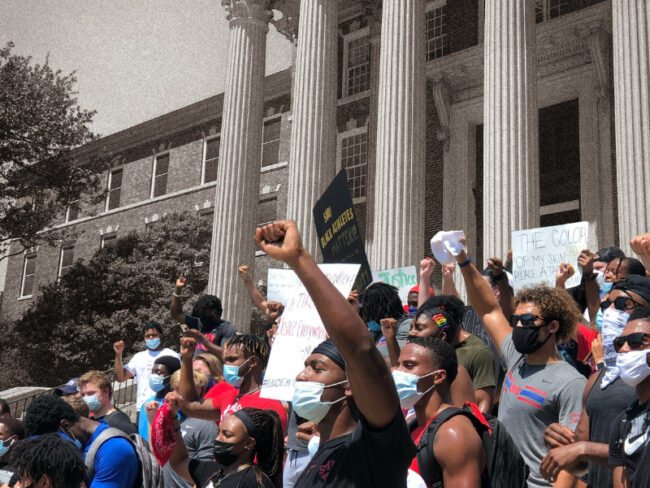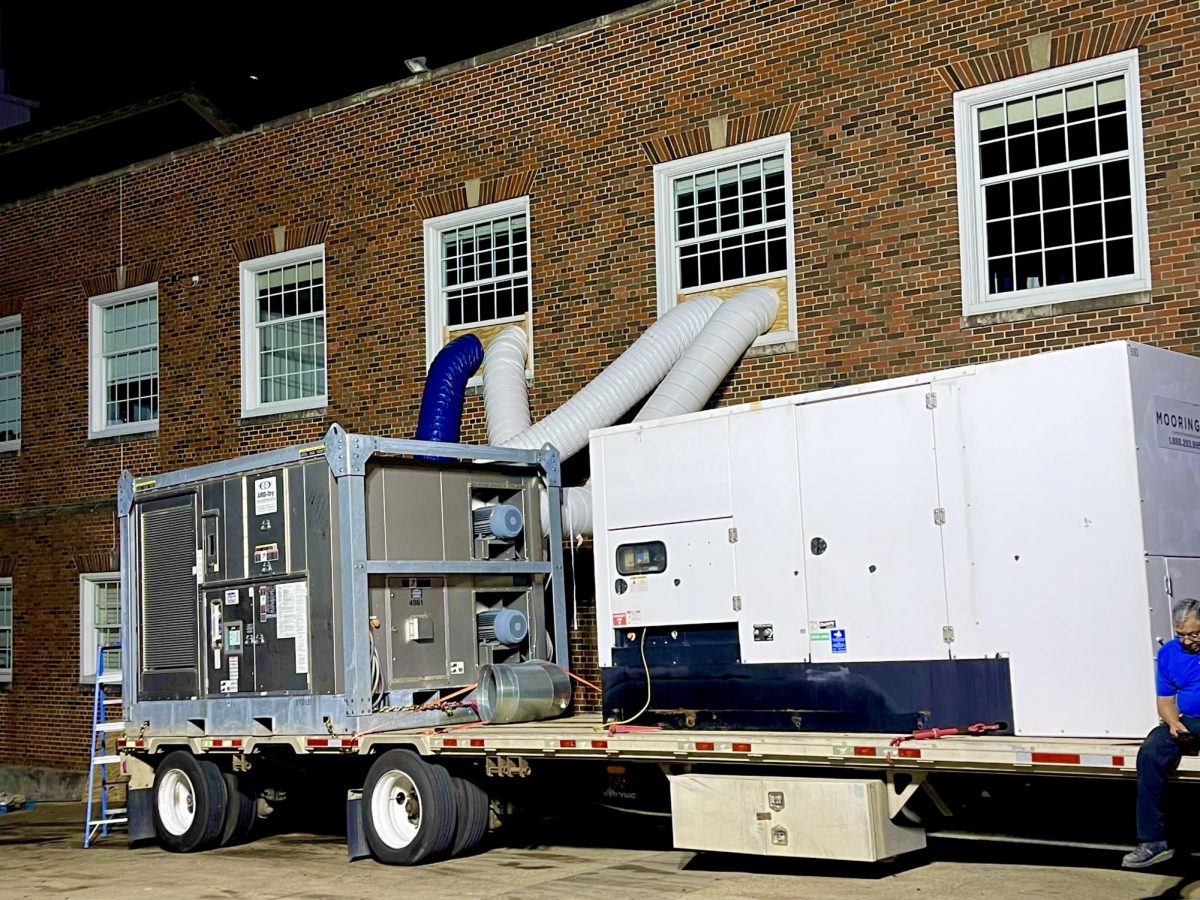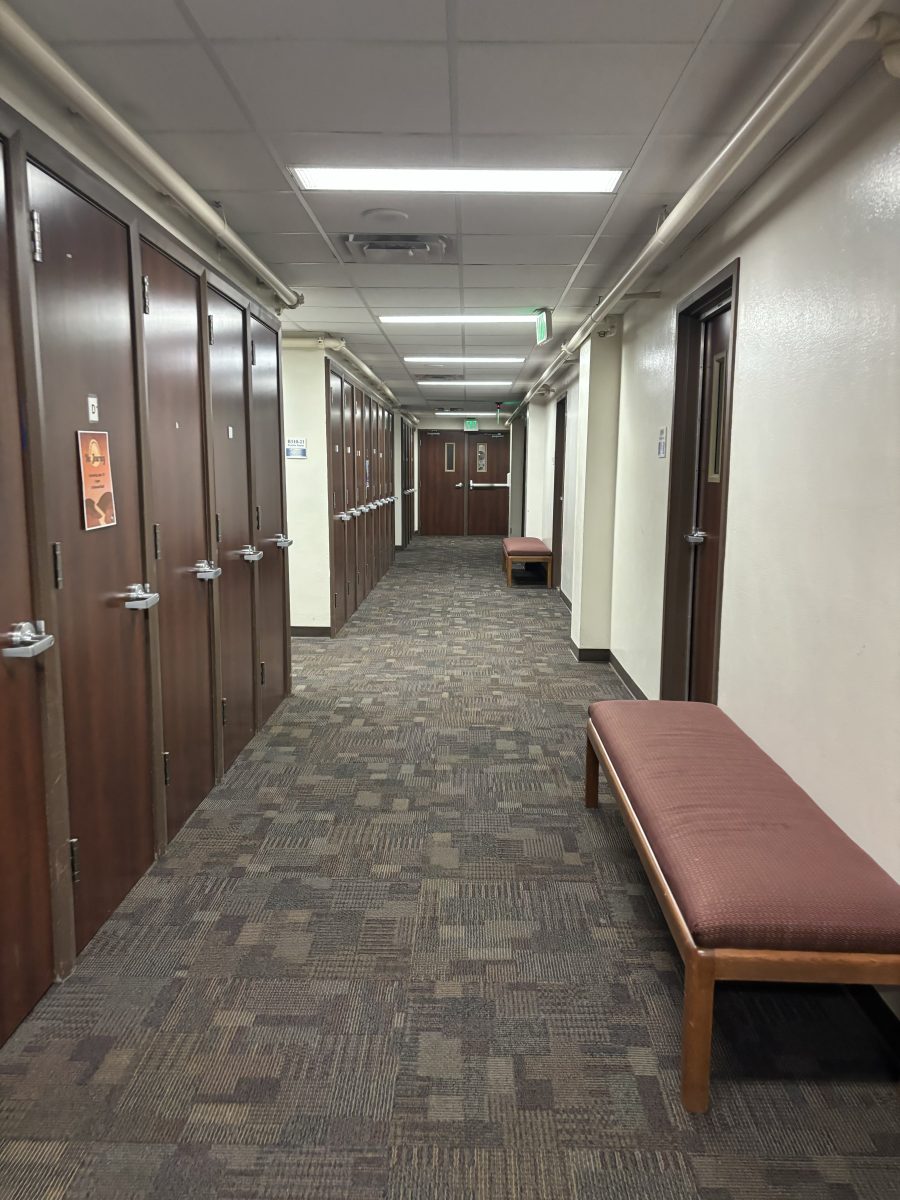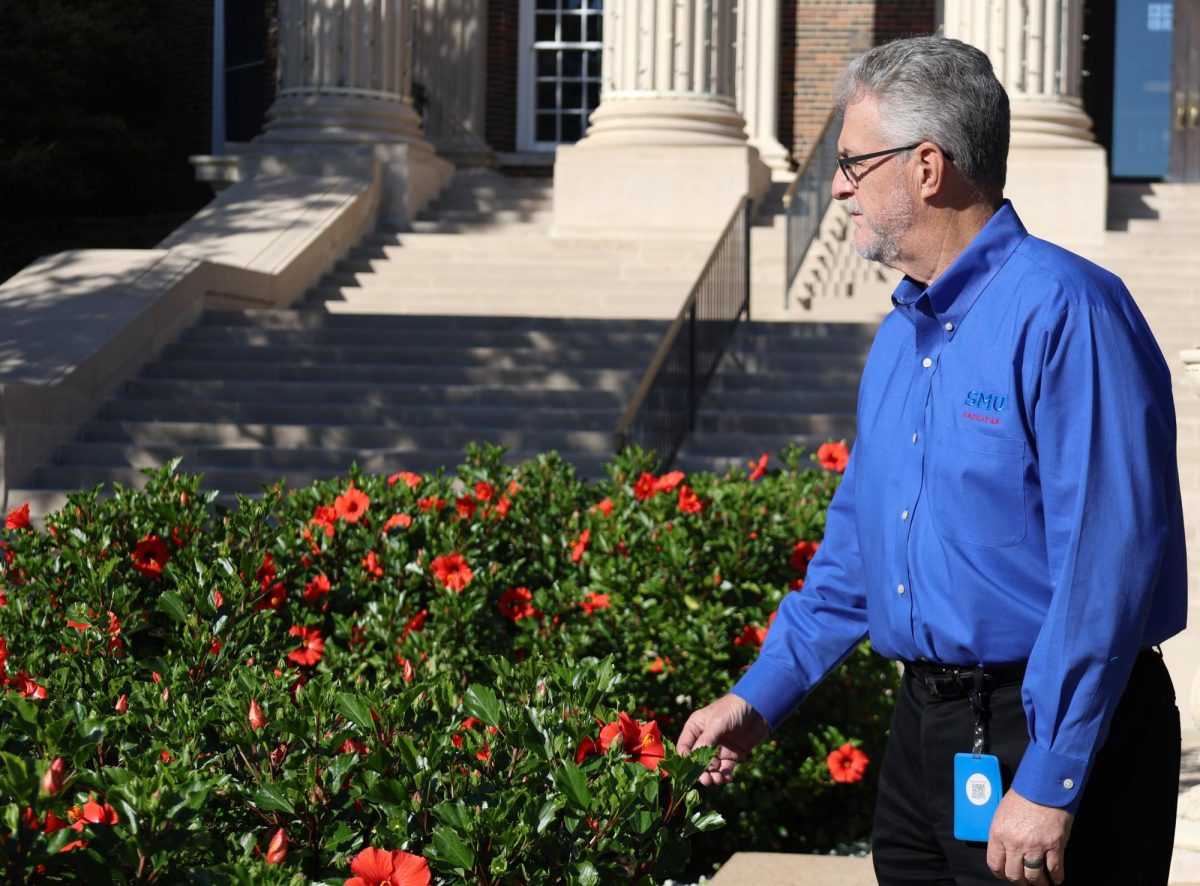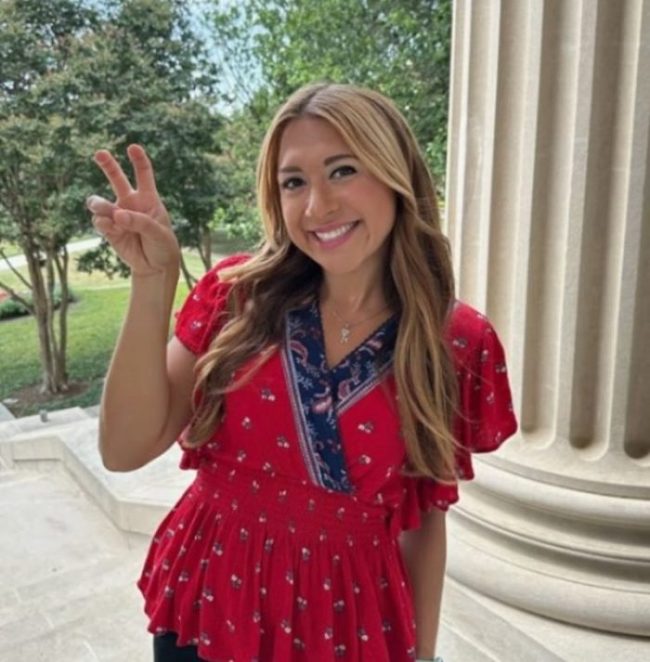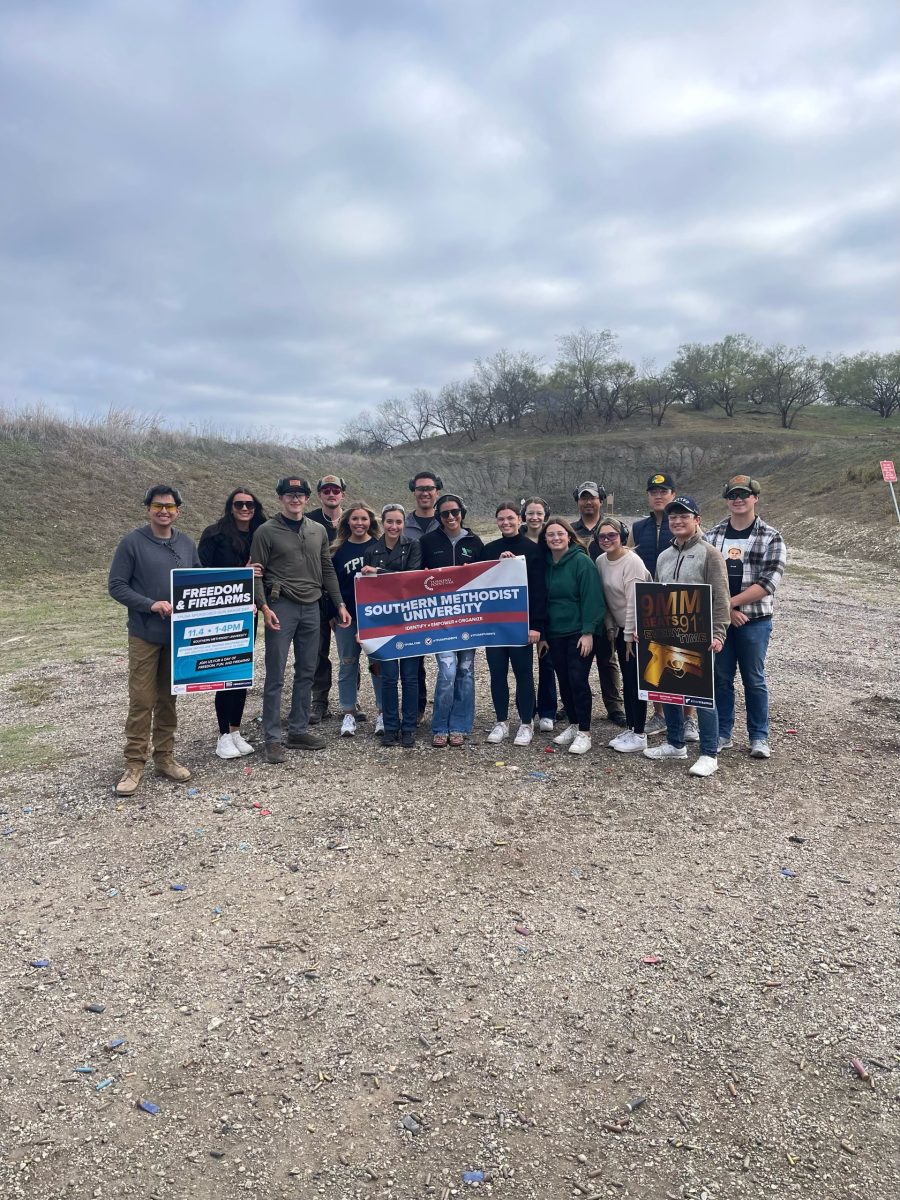When senior Shara Jeyarajah began searching SMU’s archive of student newspapers, she wasn’t sure what she would find. She was surprised SMU had an archive dating all the way back to 1915. What she found was unsettling. Issues featured stories that covered Old South Week, an annual event on campus that celebrated the legacy of the Confederacy with parades and pageants during the 1950s and ‘60s. Reminders in student newspapers informed the campus about upcoming Ku Klux Klan community events during the 1920s when Dallas served as an active location for the hate group. In a 1948 issue of The SMU Campus newspaper, she found a headline that read “Students Favor Race Segregation” with an informal polling of the segregated student body.
“It was pretty amazing to see an issue that we consider so outrageous, and so obviously unpopular now, was the norm back then,” Jeyarajah says. “And not only the norm, but it was co-signed by all these university students that are supposedly training to have a more worldly view of the world.”
What she found in the archives inspired Jeyarajah to create a podcast called “Maladjusted” that retells the history of SMU through a racial justice lens. The podcast creates a sense of legacy and continuity for students of color, Jeyarajah says, chronicling stories from the desegregation of the Perkins School of Theology by five Black students in the 1950s to current efforts being implemented to promote diversity.
Jeyarajah isn’t the only student to turn to the archives to gain a broader understanding of the university’s history. Journalism and human rights students along with editors and reporters for The Daily Campus also have spent years investigating how race has been covered on campus. What they revealed were activities, buildings and connections to slavery that warrant discussion and thought — just like those occurring on campuses across the nation.
Public symbols commemorating these eras have become a greater topic of discussion on college campuses since the racial justice movements of 2020 that were prompted by the murder of George Floyd. Since then, more than 400 symbols — from university names to Confederate monuments — have been removed, according to the Southern Poverty Law Center. SMU also reckoned with its racial legacy that year, prompted by demands from historically marginalized groups on campus, who wanted university officials to address names, customs, monuments and buildings that document the university’s history of connections to slavery, bias and racism.
“These buildings are harmful in the sense that they depict and memorialize a bygone era when overt racism was tolerated as a norm that went relatively unquestioned either on campus or in society,” says Rick Halperin, director of the SMU Human Rights Program. He added that the absence of discussion could have to do with the lack of a collective campus memory.
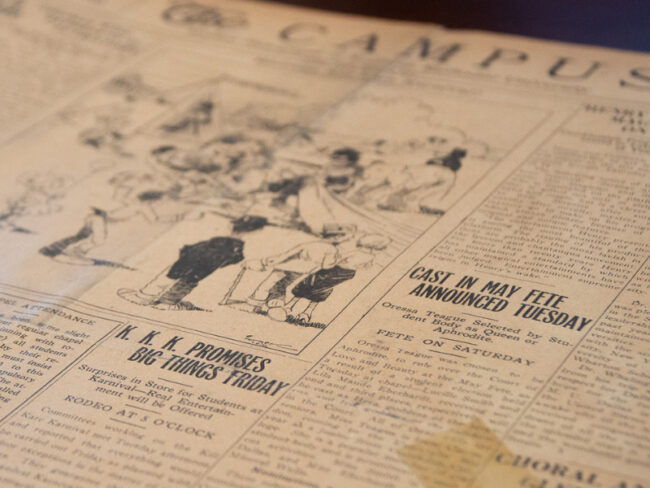
For now, the archives serve as the campus’ memory bank, and they document events such as one long-forgotten event called the Kill Kare Karnival, which made its campus debut in May 1919. Students and local families gathered under tents on Dallas Hall Lawn for an evening of performances and attractions. The most popular attraction, as reported by the student newspaper of the time, The Campus, was The Old Plantation Show, a minstrel show featuring white actors in blackface makeup performing exaggerated and racially offensive skits and songs. Despite hosting three different showtimes to accommodate for large audiences, organizers still turned people away.
The Kill Kare Karnival was recognized by the university and doubled as a pep rally for the football game against TCU. The carnival even rivaled homecoming in popularity as the sole event uniting students across different organizations to plan, as reported by the student paper.
Beyond the striking series of K’s in its title, the Kill Kare Karnival’s popularity and the significance it garnered in campus culture featured brazenly racist features. For example, a list of booths planned for the 1928 carnival included an offensive racial slur to describe Black babies to be thrown at a booth for students “wishing to be National League pitchers.” At the height of its popularity, the carnival announced a new addition to the show: “… the world renowned blackfaced comedian, Jordan Ownby ….”
Ownby was not world-renowned. He was a journalism student on campus at the time, SMU Archivist Joan Gosnell confirmed. Following his graduation, Ownby’s SMU legacy was secured by a $10,000 contribution made in 1922 to upgrade the school’s football field from wooden bleachers to a steel stadium. Opened in 1923 as Ownby Oval, the stadium was updated again in 1926 and renamed Ownby Stadium, serving as a symbol of school pride for 52 years before it was replaced by Ford Stadium. Though Ownby’s name is no longer a fixture on the stadium, his legacy remains on campus. Today, the street that runs parallel to the West side of Ford Stadium is named Ownby Drive.
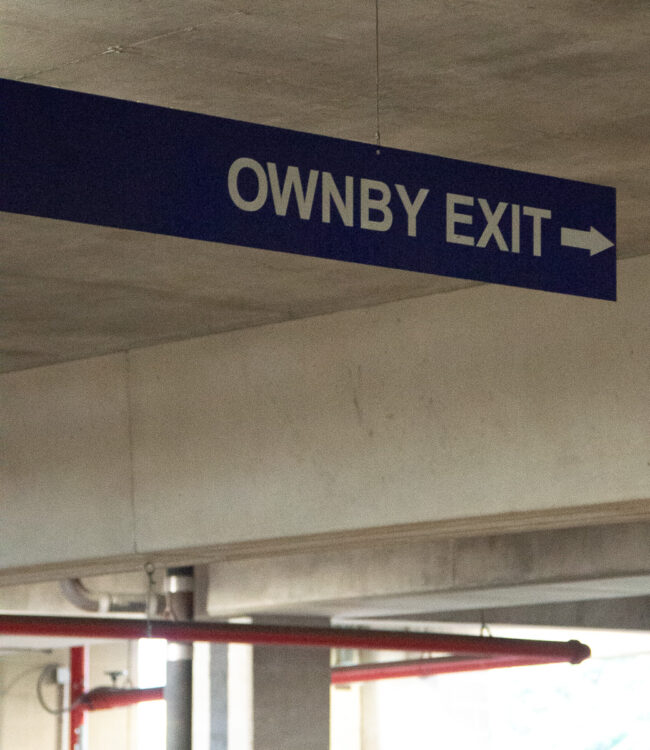
This history of racism embedded in SMU’s campus extends beyond Ownby Drive. Less than half a mile away, Selecman Hall commemorates the university’s third president Charles Selecman who, according to D Magazine, publicly supported the KKK’s presence in Dallas. Caruth Hall and Caruth Auditorium also connect to the country’s history of slavery. The Caruth family, who gave land to the university in 1911, was one of the largest slave owners in North Texas.
But SMU distances itself from the Caruth legacy, telling The Daily Campus in a statement, “The gift of land that was instrumental in the founding of SMU came from William Walter Caruth, who was born after the Civil War and was not a slaveholder. The buildings, programs and institutes on campus that carry the Caruth name stem from the legacy of his gift to the Methodist Educational Commission of Texas and his descendants – an important distinction.”
For senior Kennedy Coleman, former president of the Association of Black Students (ABS), the lack of a collective memory makes it easier to promote the positive parts of SMU’s past while ignoring the darker parts. “I think that there are just earlier parts of SMU’s history that they are just ignoring or they don’t see a reason in trying to bring that to light, and that can be detrimental,” Coleman says.
Halperin agrees.
“Most people at SMU probably have little or no knowledge of the historical connections between the families for whom our buildings and streets are named […] and the eras they represent,” Halperin says. “So it’s not surprising that there is little outcry about the ongoing display of those names in SMU public places.”
In SMU’s history, students have often assumed the responsibility for uncovering issues of systemic discrimination and making demands for action. In the 1960s, students organized sit-ins to urge integration in University Park and marched with protestors from Selma to Montgomery, Alabama, on Bloody Sunday. In 1967, the Black League of Afro-American College Students (BLAACS) negotiated demands with then-SMU president Willis M. Tate to address disparities in representation, resources and support for students from historically marginalized communities. Forty-six years later, in 2015, Black students began sharing their experiences with racism on Twitter under #BlackAtSMU. The hashtag went viral, bringing the same frustrations of 1967 to the forefront, and the ABS drafted a list of demands for the administration.
In response, President R. Gerald Turner began holding monthly meetings with Black students and a cultural intelligence initiative called CIQ@SMU was implemented to guide efforts to improve diversity, equity and inclusion (DEI) on campus. But five years later, students expressed disappointment in the lack of systemic change, and ABS issued demands again, writing at the time, “The University had the opportunity to facilitate change in 1969 and again in 2015; however, we do not intend to miss our chance in 2020.”
Coleman, who served as director of programming for ABS in 2020, acknowledges the school has made progress in making the campus a more inclusive space. “There’s a lot of times where students are finding things out and then it becomes a bigger thing than it would be if the administration just acknowledged all the good and the bad parts of the university,” she says. “It’s always the students that are doing the work. It would be nice for the administration to be the ones interested in finding these things instead of students forcing them to see that this is also important to us.”
The work of uncovering and addressing SMU’s history often falls on students of color who already are burdened with finding a sense of belonging at a predominately white institution. “We have a lot of other things on our mind besides maintaining antiracism at our institution, which is like a second or third or fourth job for students of color,” Jeyarajah says.
Though SMU was founded more than a century ago, its institutional legacy delivers a contemporary impact on students and staff from marginalized and underrepresented communities. For Skyler Arbuckle, a 2022 graduate from the Dedman School of Law, that history remains intertwined with her own. As an undergraduate student at Howard University, Arbuckle learned through genealogical records that her father’s family had been enslaved by the Caruth family in Dallas.
In a 2021 interview published by the SMU Law Review, Arbuckle told University of Colorado law professor Lolita Buckner Inniss that her family’s history and specific ties to SMU are deeply personal to her. “Like so much about the history of Black people in the Dallas area, the story of Blacks attending SMU is complex and powerful,” Arbuckle says.
Arbuckle’s ancestors were successful after emancipation. Her great-grandfather Lewis Alonzo Fields was the first African American entrepreneur recognized by the city of Dallas. Still, the legacy of enslavement remains a painful driving force for Arbuckle, one that inspired her to attend Dedman Law. “Now here I am a law student at SMU, a school situated on some of the same land my family toiled over, studying to become a Black female attorney,” Arbuckle says. “It is an honor and a privilege to be studying the law at a school that would not exist had it not been for the labor of my ancestors and other African Americans, enslaved and free, some of whom we will never know.”
While few SMU students possess ties as direct as Arbuckle’s, all students who walk this campus became part of and connected to this legacy. Without an institutional understanding and a willingness to engage in difficult conversations, each graduating class exits and an incoming cohort of students arrive without an understanding of the school’s history, one they may or may not uncover, Coleman says. “Since we do see these patterns happening with administration,” Coleman says. “It’s like we have the responsibility to be like, ‘If the administration isn’t going to hold themselves accountable, then we have to.’”
And students have done just that, creating their own collective memory of SMU’s history and the implications it creates for all students. Nia Kamau, a 2022 graduate of SMU, created “In Their Own Voices” in 2020, an oral history project that uses collective memory built through storytelling to create an emotional connection between students and the university’s history. “It was enlightening to see just how great the challenges they faced were,” Kamau says. “And a lot of it was in recent history. I wanted to be able to share those stories with others and use the power of storytelling to help us wrestle with our history at SMU and basically empower student leaders and staff members, administrators, [and] faculty on campus on how to actively address those kinds of issues.”
Using stories from alumni interviews helps students strategize and create solutions for issues informed by diversity, equity and inclusion through workshops accessible to everyone. Kamau says recognizing this institutional legacy is key to making progress to ensure a more inclusive campus in the future. “I think that every good institution is able to be honest, and to celebrate their victories, but to also grow through their hard spots,” she says. “And that requires knowing what your history is, knowing the ups and downs so that you can understand how it might be affecting your culture today.”
Kamau hopes that in the future the program will be implemented on a wider scale to ensure more people on campus — from students to administrators — gain a comprehensive understanding of SMU’s legacy. “I think it’s crucial that everyone who is seeking to lead on this campus understands its history,” she says. “So that would really be my vision for the future, for the workshop to continue to be student-led and to be required for new students to experience and for staff and faculty to experience.”
Jeyarajah’s “Maladjusted” podcast also shares similar goals. She seeks to construct an institutional knowledge of SMU’s legacy, especially for its students of color. Jeyarajah says students deserve to know the school’s entire legacy. “There’s so much just basic knowledge that we lack,” she says. “This is what our legacy is, and when we start to attend SMU it becomes something that we deserve to know more about.” “Maladjusted” unpacks the history of racial justice at SMU, but Jeyarajah says students deserve more. She says administrators and faculty should use history, collected in the podcast and other programs like “In Their Own Voices,” to educate the SMU community.
“It is the role of administrators to look courageously at some of the projects that have been created to institutionalize and implement “Maladjusted” and “In Their Own Voices” and #BlackAtSMU and all these projects into their curriculums because they are entirely relevant to what people are teaching,” she says.
The #BlackAtSMU film is an award-winning movie created by students that builds off of the 2015 movement, depicting five Black students’ experiences with racism on campus. When the film premiered on Dallas Hall Lawn in 2021, student director Aysia Lane says it was created to encourage discussions of change on campus.
“I want people to understand that it’s okay to feel uncomfortable, but you have to have dialogue and conversation if you want to change,” Lane told a DC reporter in 2021. “I’m just hoping that […] people can kind of walk away thinking, ‘I feel something about this, and I really want to do something about it.’”
Chief Diversity Officer Maria Dixon Hall says continuing to foster this collective memory helps students understand their place in the SMU legacy and create avenues to enact change. “Systemic change takes a very long time, and the people coming in don’t know what all the people before them did before,” Dixon Hall says. “We have to continue to tell that story to new generations, but then we have to invite new generations to write the next chapter.”
Other schools in Texas faced similar issues in recent years and addressed them in a variety of ways. In 2017, the University of Texas at Austin removed three Confederate statues from its campus that commemorated the legacy of the Confederacy. Texas A&M created a commission in 2017 to study the history of a statue of a former governor who also served as a Confederate general. The commission ultimately recommended that the university provide more context about the history of the statue rather than removing it. SMU has not created such a task force, according to university officials.
In 2019, the Dallas City Council voted to remove a 65-foot-tall monument honoring Confederate general Robert E. Lee from the heart of downtown, four miles from the SMU campus. The recommendation to remove the statue came from a task force created by the Dallas mayor to address Confederate monuments on city property.
Jeyarajah hopes SMU administration acknowledges the place Ownby and Caruth have in the university’s history and then work to create a new legacy. In an email, university officials referred The Daily Campus to a statement issued in 2020 by the Board of Trustees that speaks to “the actions and beliefs of individual people tied to SMU history.”
“SMU was founded in 1911 by the Methodist Church and the city of Dallas, both of which were racially segregated at that time. While SMU may have reflected society then, we no longer hold those beliefs nor tolerate any racial injustices or inequities in our University or in the communities we serve.”
Kennedy shares Jeyarajah’s hope, especially as SMU’s peer institutions address parts of their pasts, such as Baylor University which unveiled two statues in April to honor the university’s first Black graduates.
“We’ve done nothing to commemorate our first Black graduates or minority students that are basically trailblazers in SMU history,” Coleman says. “I feel like there’s little recognition for those groups, especially by the university itself.
Halperin says as a historian and human rights educator, instead of erasing the names and the history behind them it’s more beneficial to keep them. “They belong, in my opinion, in places where future generations can learn and see that these things used to be in public places as norms,” he says.
Whatever approach is taken for addressing the legacy of these names on campus, the university has an opportunity to look back on SMU’s history, as students continue to do with projects such as “Maladjusted” and “In Their Own Voices.”
“However painful it might be to come to grips with the fact that this university had a role to play in supporting segregation and racist ideas, we have to acknowledge that pain, admit wrong doing and move beyond it,” Halperin says. “And you can’t move beyond it if you don’t even admit wrong doing.”
Click here for a digital timeline of findings from the SMU digital archives collection.
Anna Taglioli, Shelby Geist, Bri Flores, Jordyn Harrell and Joan Gosnell contributed to the original reporting for this story.



